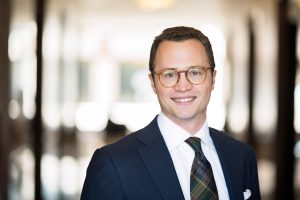Before Stoll, Schall, and Stark. Appeal from the United States District Court for the Eastern District of Texas.
Summary: While the indefinite article “a” means “one or more” in open ended claims, use of the term “said” indicates that the portion of the claim limitation is a reference back to the previously claimed term, and thus may require a single claim element to be capable of performing all the recited functionality.
Salazar sued AT&T for infringement of U.S. Patent No. 5,802,467, which describes technology for wired and wireless communications. The claims recite “a microprocessor for generating . . . , said microprocessor creating . . . , a plurality of parameter sets received by said microprocessor . . . , [and] said microprocessor generating . . . .” At claim construction, the district court construed the claim language to mean “one or more microprocessors, at least one of which is configured to perform the generating, creating, retrieving, and generating functions.” The district court reasoned that use of the term “said” required that “at least one microprocessor must satisfy all the functional (and relational) limitations.” Consequently, the jury found the accused products did not infringe the ‘467 patent.
On appeal, Salazar argued that the district court erred by interpreting the claim language as requiring as a single microprocessor that could perform all of the later recited “generating,” “creating,” and “retrieving” functions.
Relying on precedent, the Federal Circuit determined that while “claim language that introduces a claim element using an indefinite article and further defines the element with subsequently recited functionality” may allow for more than a single instance of the claim element, use of “said” “may nonetheless require that a single instance of the element be capable of performing all the recited functionality.” The Federal Circuit agreed that “while the claim term ‘a microprocessor’ d[id] not require there be only one microprocessor, the subsequent limitations referring back to ‘said microprocessor’ require[d] that at least one microprocessor be capable of performing each of the claimed functions.” The Federal Circuit therefore affirmed the finding of non-infringement.
AT&T also appealed the district court’s denial of its motion for summary judgment on the issue of claim preclusion, and the district court’s determination that the patent was not anticipated on the grounds that AT&T presented “substantial clear and convincing evidence” that the claims were anticipated. The Federal Circuit did not reach the claim preclusion issue because it affirmed non-infringement. With respect to AT&T’s anticipation argument, the Federal Circuit held that AT&T waived this argument by failing to move for judgment as a matter of law under FRCP 50.
Editor: Paul Stewart
